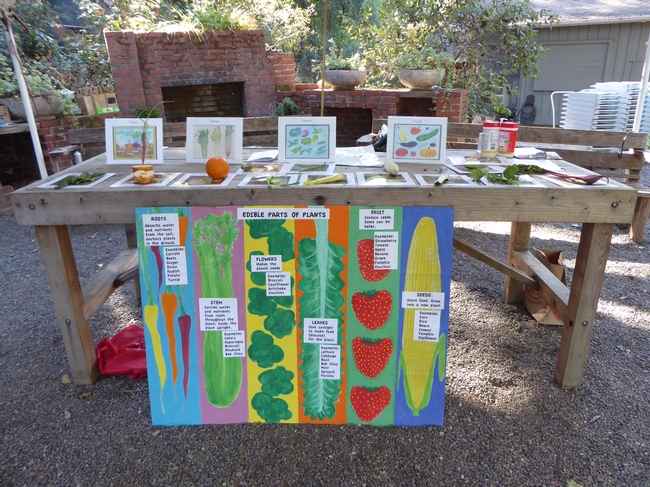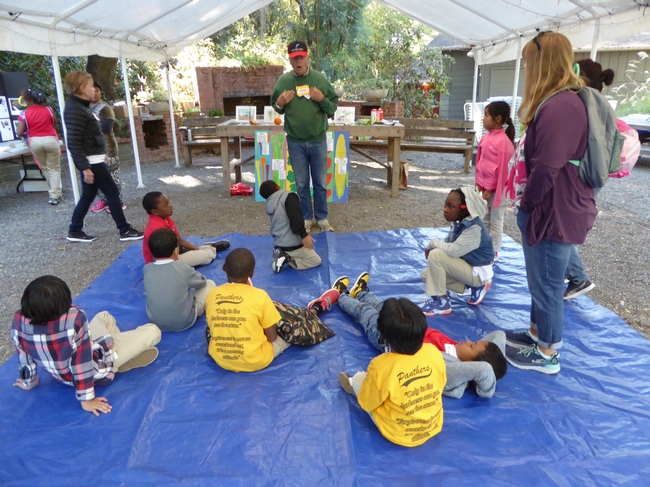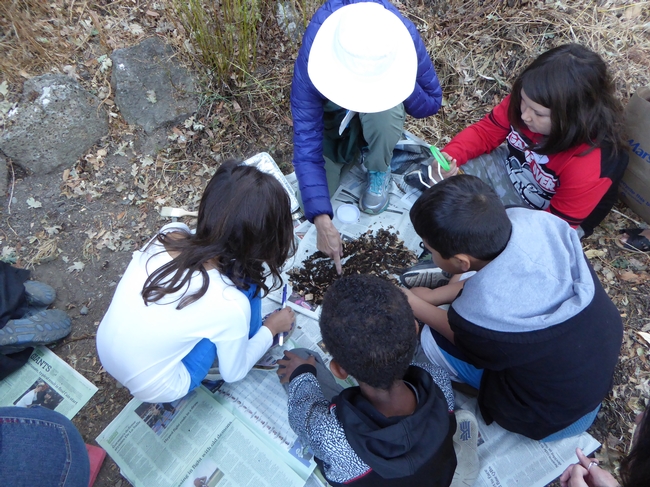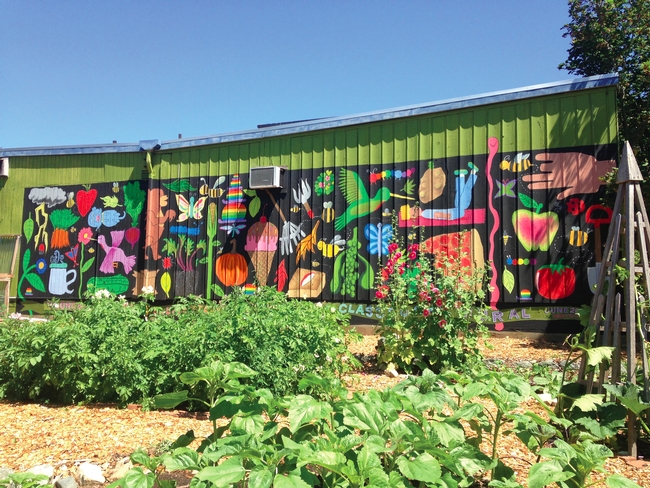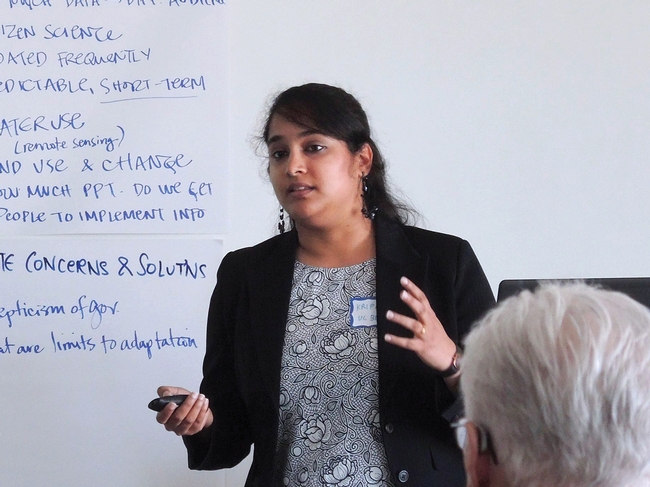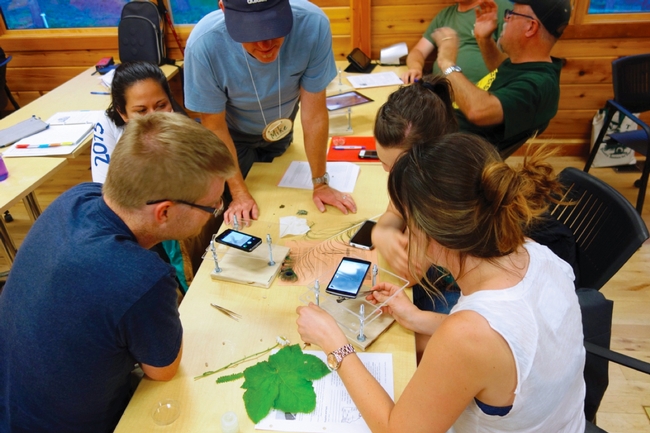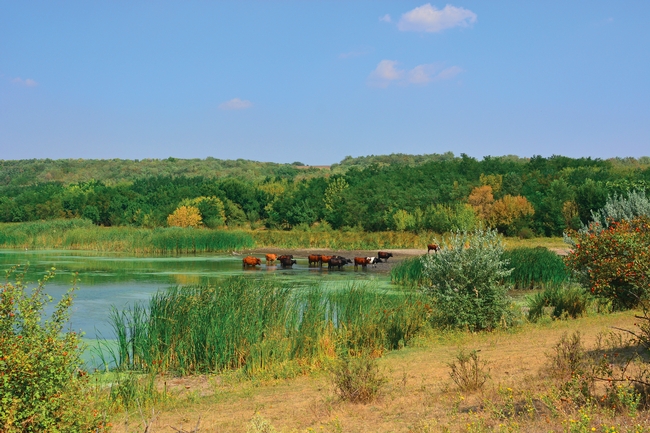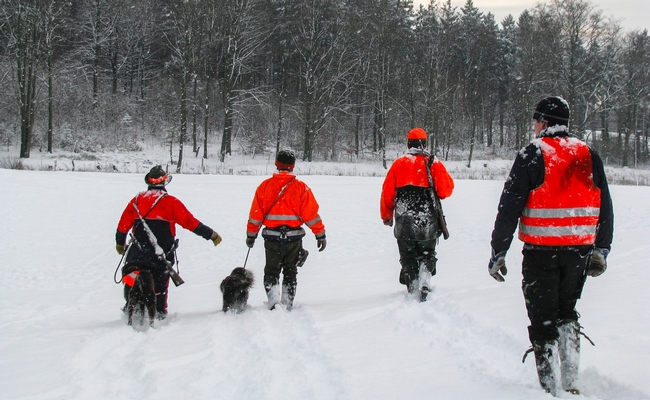
Posts Tagged: School Garden
Dig it, Grow it, Eat it: School gardens support learning and healthier food choices
The success of a garden is normally identified by plentiful crops of tomatoes and squash or the beautiful display of vibrant thriving flowers, shrubs or trees. However, a school garden's true success is dependent on the rich experiences and education students receive.
Taking the classroom into the garden
School gardens can play a big part in supporting a child's education outside of the traditional classroom environment; offering hands-on learning experiences in a variety of core curricula. Social sciences, language arts, nutrition and math are just a few of the many subjects that can be easily integrated into the school garden curriculum.
When paired with nutrition education, school gardens can transform food attitudes and habits.
“Gardens containing fruits and vegetables can change attitudes about particular foods; there is a direct link between growing and eating more fruits and vegetables,” said Missy Gable, statewide director for the UC Master Gardener Program. “Programs statewide connect people to local community gardens, or provide school administrators and staff the information needed to get started with their own school, community or home garden.”
“Dig it, Grow it, Eat it”
The UC Master Gardener Program of Marin County hosts an award-winning school gardening program that emphasizes engaging students with the many learning opportunities in nature. The program is a portable field trip for school-age youth called “Dig it, Grow it, Eat it.”
“Dig it, Grow it, Eat it” starts with University-trained UC Master Gardener volunteers training school educators. Once trained, educators use the curriculum to teach students how to grow edible plants from seed to harvest. UC Master Gardener volunteers help deliver the curriculum and provide additional resources. Students learn how plants grow, and receive nutrition lessons to give them a better understanding of the human body's need for healthy food.
The half-day workshop rotates groups of students through six stations providing them with garden enhanced nutrition education, linking health with growing and harvesting foods they like to eat and are good for them. These include:
- Edible Plant Parts
- How Plants Grow
- Plant Seed Science
- Propagation
- Soil Science
The “Dig it, Grow it, Eat it” curriculum is centered on the theme “We love the earth because we care for it. We care for the earth because we love it.” For many children, getting their hands dirty in the garden and discovering the science of growing their own food brings a sense of joy and pride they can carry with them for years to come.
Connect with us
The UC Master Gardener Program extends to the public free UC research-based information about home horticulture and pest management. In exchange for the training and materials received from the University of California, UC Master Gardeners perform volunteer services in a myriad of venues. If you are interested in becoming a certified UC Master Gardener contact your local UC Cooperative Extension office or visit mg.ucanr.edu.
Graduate Students in Extension study key California concerns
In 2013, a group of graduate students in the Department of Environmental Science, Policy, and Management (ESPM) at the University of California, Berkeley sought out faculty support and successfully collaborated with UC Agriculture and Natural Resources (UC ANR) to launch the Program for Graduate Students in Extension (GSE). Participants receive up to a year of funding to conduct applied research and outreach to California communities, coordinate workshops and training events, and co-author materials with ANR academics. Over the course of the three-year pilot program, 14 students from across the College of Natural Resources at UC Berkeley have participated.
“There's really no program quite like this, where students can gain hands-on, graduate-level training in extension and outreach,” says ESPM professor John Battles, who chaired the program's steering committee. He adds, “We're grateful to all the UC ANR advisors and specialists who have offered invaluable mentorship to student fellows.”
Sustainable Food Systems and Climate Education
Alana Siegner (Energy and Resources Group, 2016–17 fellow) believes that to ensure the environmental sustainability of agricultural landscapes and to improve health outcomes for young people, it's important that students understand the scientific and social causes and consequences of climate change as it plays out in the U.S. food system. During her fellowship, she adapted existing climate change curricula to fit within farm-to-school programs, integrating food- and farming-specific examples into general lessons on climate adaptation and mitigation. The lessons, designed for students in grades 8 through 10, are hands-on, interdisciplinary, and solutions oriented, unfolding in both the classroom and the school-garden environments. Siegner piloted the curricula and other professional development resources with teachers at schools in Oakland and in Washington State's San Juan Islands.
Climate-Resilient Agriculture
Despite several advances in modeling techniques, climate projections are not widely used in agricultural decision-making. Kripa Akila Jagannathan (ERG, 2015–16 fellow) wanted to bridge this gap between climate science and decision-making needs by improving the understanding of what farmers consider relevant climate information. She interviewed almond growers in California about how they'd previously used climate information, what climatic variables were most relevant to them, and the content and communication methods that could make information on future climate more usable. Jagannathan's interviews showed that almond growers have experienced changes in climate over the past few decades that have affected plant growth. She hopes that providing growers with appropriate information on past trends and future projections can help them to make decisions that are better adapted to future climate.
Forestry and Ecosystem Education
Stella Cousins (ESPM, 2014–15 fellow) collaborated with the Forestry Institute for Teachers, a free program that provides K–12 teachers in California with knowledge and tools for teaching their students about ecosystem science and forest resource management. In addition to presenting current research to participating educators, she shared do-it-yourself miniature microscopes that can help learners of all ages explore seeds, cells, fur, and other tiny wonders. Magnifying tree-core samples from the Sierra Nevada as an example, she demonstrated how a lesson in dendrochronology can facilitate classroom learning on the ways forests grow and are shaped by climate. Cousins says, “I hope that this project will support existing efforts to make sound and sustainable ecosystem-management choices, and also help foster lifelong curiosity in California's youth about the natural world.”
Conservation and Land Easements
Conservation easements are currently one of the primary channels for protecting private land. Since easements restrict development for both current and future owners, resale value is presumably diminished, and landowners are typically compensated with a one-time payment from a conservation group. Reid Johnsen (Agricultural and Resource Economics, 2016–17 fellow) wanted to explore the relationship between rancher identity, community, and potential preferences for alternative payment structures. He surveyed landowners in Marin and Sonoma counties to gauge their support for different options, including leases and annual payments for ecosystem services. He also constructed an economic model of stakeholder behavior to help assess which payment structure delivers the greatest combined welfare to landowners, conservation groups, and the public.
Hunting and Conservation
Luke Macaulay (ESPM, 2014–15 fellow) surveyed private landowners and land managers in California to determine how recreational hunting may influence decisions regarding land-use and conservation practices. He regularly spoke on his survey findings and ran a workshop in Montana to encourage cooperative conservation efforts between hunters and environmentalists. “The feedback from the advisors on my mentorship team was invaluable in improving the quality of my research,” he reflects. The experience also had an impact on his career: In 2016, Macaulay was hired by CNR as a Cooperative Extension specialist in rangeland planning and policy.
Community and School Gardens in Marin County
Marin County's waitlists for community gardens can be up to four years long. Exacerbating that problem is the fact that it can take up to seven years to launch a new garden. Clearly, the demand for community gardening is not being met in the county.* The problem is complicated by the fact that there are eleven separate municipalities in Marin, in addition to the unincorporated county lands and 19 school districts.
Of the approximately 75 public schools in the county, 50 have school gardens, most of which have problems sustaining their school garden programs, particularly in the summer time, and particularly in the lower-income communities of the county. A well-supported comprehensive school garden program is an uphill battle considering this fragmentation, but steps are being made.
Despite the individual wealth in many of our cities, our low-income communities suffer from a significant health and income disparity. This disparity shows up in longevity rates: in the Marin municipality of Ross, the average longevity is 88 years, and in the Canal area of San Rafael, the average longevity is 77.4 years – a 10.6 year difference. In one area of Novato, the difference is even greater at 75.2, or 12.8 years.** A big part of the solution to this health disparity is access to better nutrition. For educational reasons, as well as actual produce production, community and school gardens are a part of the solution and can be an integral part of a healthy and active lifestyle.
The Canal Community Garden in San Rafael took nearly eight years to launch, getting approvals, raising money, and finally building. The process was like pulling teeth in large part because policies are not in place to streamline approvals, and little funding has been dedicated to the issue. Additionally, public awareness of the important benefits of community gardens is still low. Potential benefits include community resilience, improved health, environmental benefits, community building, outdoor education, reduction in crime rates, and savings on food bills.
Individual residents' objections are often ill founded, or gardens are misunderstood. Most community gardens now adhere to strict performance standards which prevent many of the problems that residents imagine. Both broader public awareness of the benefits, and streamlining city ordinances would help facilitate approvals. This is true despite the fact that many city officials try to champion these projects.
Mill Valley's, original community garden, for example, has a waitlist of more than 70 people; a several year wait. Although many city officials supported the idea of a second community garden, it has taken seven years to launch the second 38-bed garden. It is the exceptional case when a community garden is launched is less time. Often the shorter time period is because the land and/or water is privately owned by faith-based institutions or individuals, and in one case, a golf course!
Efforts coordinated by The Marin Food Policy Council (MFPC) and UCCE Marin took on this problem on a couple years ago. Their focus is on food security in lower-income communities. The county has 32 low-income schools, defined by 30% or more of their student body on the government program Free and Reduced Meal Program (FRMP). They developed templates for planners, commissioners, and city council members to list community gardens in zoning codes as a “permitted use”, and charged a UCCE Marin Community Garden Program Coordinator to identify and develop a map of potential sites for community gardens in the county, and “encourage garden management support through meet-ups, garden tours, and a conference.” The meet-ups and tours provide a place for the exchange of ideas and best practices. The Coordinator position also allows for a centralization of some of the school and community garden material and resource needs such as seeds, starts, tools, compost, mulch, via seed/tool libraries, banks, material yards, or simple donations. Countywide garden volunteer coordination is part of this effort as well.
The fragmentation in the county makes these efforts very challenging, but it is exciting to push forward Marin County Urban Ag in this way!
*Marin County Community Garden Needs Assessment, University of California Cooperative Extension, Marin. December 2010
**A Portrait of Marin: Marin County Human Development Report, 2012. (MeasureOfAmerica.org)
UC helps Davis Farm-to-School find success for over a decade

A secret to success, says UC SAREP’s program assistant Jeri Ohmart, “is patience and persistence. Keep your eye on the prize — increasing fresh, local, seasonal products in the school meal program; and creating an environment that teaches the full cycle from garden to cafeteria to compost and back to garden.”

Ohmart, who conducts the annual evaluation says the biggest lesson learned over the last 12 years of evaluations is not how to get the freshest produce or the healthiest meal. The lessons are much more salient. “To meet the goals of the farm-to-school program requires developing solid relationships based on mutual respect and trust — with food service directors, staff, maintenance and operations, school board members, teachers, and parents. Engage the larger community in any way possible. These are the principles that have kept our program moving in positive directions despite budget setbacks and the vagaries of funding and personnel shifts.”
To learn more about Davis Farm-to-School, visit their website. Read the full Davis Farm-to-School Evaluation or the Summary and Recommendations. Learn about more of SAREP's farm-to-school work on the SAREP web site.
How do we get better food in our schools?
According to FoodCorps, only 2% of children eat enough fruits and vegetables. Kids in the south suffer from very high rates of obesity. 1 in 3 children born in 2000 are on track to develop type II diabetes and 50% of children of color are expected to develop diabetes during their lifetimes. That's an astounding number.
So how do we fix this? Debra Eschmeyer of FoodCorps (and speaker at California Roots, Global Reach) says we start with the schools.
Watch her video to see how:

